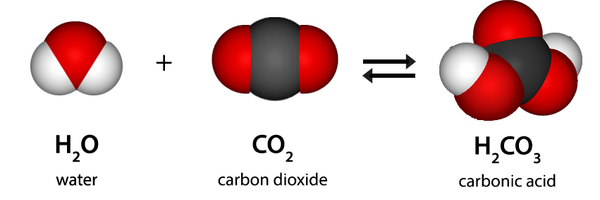Productive re-use of Carbon Dioxide
Ethan Lin
Grade 9
Presentation
No video provided
Problem
CO2 emissions are increasing as our technology advances, and global warming is a problem that will affect everyone. By finding a way to remove CO2 from our atmostphere, or even better, re-use it for productive purposes.
Method
During one of my research sessions, I came across an article stating that CO2 can be separated through dissolving it in water. In this process, it goes from CO2+H2O to H+HCO3, which then turns into H2+CO3.
Carbonate can be present in several different forms, but calcium carbonate has the most applications. It is most commonly used in "building material, or limestone aggregate for road building, as an ingredient of cement, or as the starting material for the preparation of builders' lime by burning in a kiln" (Calcium Carbonate, n.d.). This application and re-use of CO2 will be plausible, if the calcium reacts and forms calcite in the solution of H2O, H2, and CO3. Furthermore, calcite can be used and sold as jewelry, further contributing to the global economy.
A sodium reaction with the solution would also be theoretically valid.
Using a tank of water and carbon dioxide gas, in an air tight environment with only the two substances and calcium/sodium, theoretically it will react with one of three things: H2O, HCO3, CO3. Because it is in an airtight environment, the CO2 will always be in contact with H2O, making it less likely for H2+CO3 to separate back into H2O+CO2.
Research
Through extensive research, I found out that my "hypothesis" that group two metals can be used to seperate CO2 and be used for more productive purposes was partially supported. With the burning of raw Mg in the prescence of CO2, the Mg reacts vigourously and turns into 2MgO+C.
However, because of the fact the raw magnesium isn't found abundantly on Earth, rather it is found more commonly in compounds like magnesite (MgHCO3), magnesium oxide (MgO), and magnesium sulfate (MgSO4), my idea seems to be counterintuitive.
Raw magnesium itself is produced mainly through the process MgHCO3 --> MgO+CO2, which then the MgO is taken to seperate into Mg and O. My idea, while valid, is basically reversing the work of producing raw magnesium. The process of burning magnesium and reacting with carbon dioxide will theoretically take more energy to execute than the process of turning MgO to Mg, accounting for energy inefficiencies.
During one of my research sessions, I came across an article stating that CO2 can be separated through dissolving it in water. In this process, it goes from CO2+H2O to H+HCO3, which then turns into H2+CO3.
Carbonate can be present in several different forms, but calcium carbonate has the most applications. It is most commonly used in "building material, or limestone aggregate for road building, as an ingredient of cement, or as the starting material for the preparation of builders' lime by burning in a kiln" (Calcium Carbonate, n.d.). This application and re-use of CO2 will be plausible, if the calcium reacts and forms calcite in the solution of H2O, H2, and CO3. Furthermore, calcite can be used and sold as jewelry, further contributing to the global economy.
However, there is also a possibility where the calcium reacts with bicarbonate ions, forming calcium bicarbonate.
There is also a possibility for reacting sodium with the solution, creating either sodium carbonate or sodium bicarbonate, both are applicable in real life,
Data
Conclusion
While the initial hypothesis regarding the use of group two metals, particularly magnesium, for separating CO2 and enhancing productivity demonstrated some viability through the vigorous reaction of magnesium with CO2, further investigation revealed its significant limitations. The scarcity of raw magnesium on Earth, coupled with the energy inefficiencies associated with the proposed process, underscores the impracticality of this approach.
Citations
References
Ferrell, M. (2013, May 17). Fire and Flame 38 - Magnesium Burning in CO2. YouTube. Retrieved March 13, 2024, from https://www.youtube.com/watch?v=2oQ_9nFe9HU
Magnesia (MgO) Production and Characterization, and Its Influence on the Performance of Cementitious Materials: A Review. (2020, October 23). NCBI. Retrieved March 13, 2024, from https://www.ncbi.nlm.nih.gov/pmc/articles/PMC7660681/
Magnesium Compounds Statistics and Information | U.S. Geological Survey. (n.d.). USGS.gov. Retrieved March 13, 2024, from https://www.usgs.gov/centers/national-minerals-information-center/magnesium-compounds-statistics-and-information
Magnesium processing | Techniques & Methods. (n.d.). Britannica. Retrieved March 13, 2024, from https://www.britannica.com/technology/magnesium-processing
Water quality information - Free Carbon Dioxide in Water | APEC Water. (n.d.). APEC Water Systems. Retrieved March 13, 2024, from https://www.freedrinkingwater.com/water-education2/75-carbon-dioxide.htm

